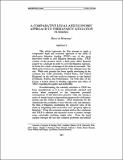| dc.description.abstract |
This article represents the first attempt to apply a comparative legal and economic approach to the study of third-party litigation funding (TPLF)—one of the most innovative trends in civil litigation financing today. TPLF consists of the practice where a third party offers financial support to a claimant in order to cover his litigation expenses, in return for a share of damages if the claim is successful. The third party receives no compensation if the claimant loses the suit. While such practice has been rapidly developing in the common law world (Australia, United States, and United Kingdom), in the civil law world its existence is very limited (Germany, Austria, and Switzerland). On both sides of the Ocean, a heated debate is dividing supporters and critics of TPLF, regarding its legality and desirability.Notwithstanding, the scholarly attention to TPLF has been unsatisfactory as it is too domestically oriented and scarce when compared to the long-term potential consequences of this innovative practice—only one among a series of trends based on interactions between the civil justice system and the world of finance. TPLF represents for the claimholder the possibility to deal with the costs and eliminate the risks of litigation, maximizing the expected value of his claim by bargaining with an investor over “property rights in litigation.” From the economic analysis derives the conclusion that TPLF is efficient and increases access to justice, though some externality problems might exist. From the legal analysis emerges the fact that common problems and judicial orientations exist in all jurisdictions where TPLF has developed, particularly as far as the issue of control over the litigation is concerned. Finally, this Article opens to a reflection on why TPLF has not developed in the civil law world as it has in the common law and advances some hypotheses on future developments of the industry. |

